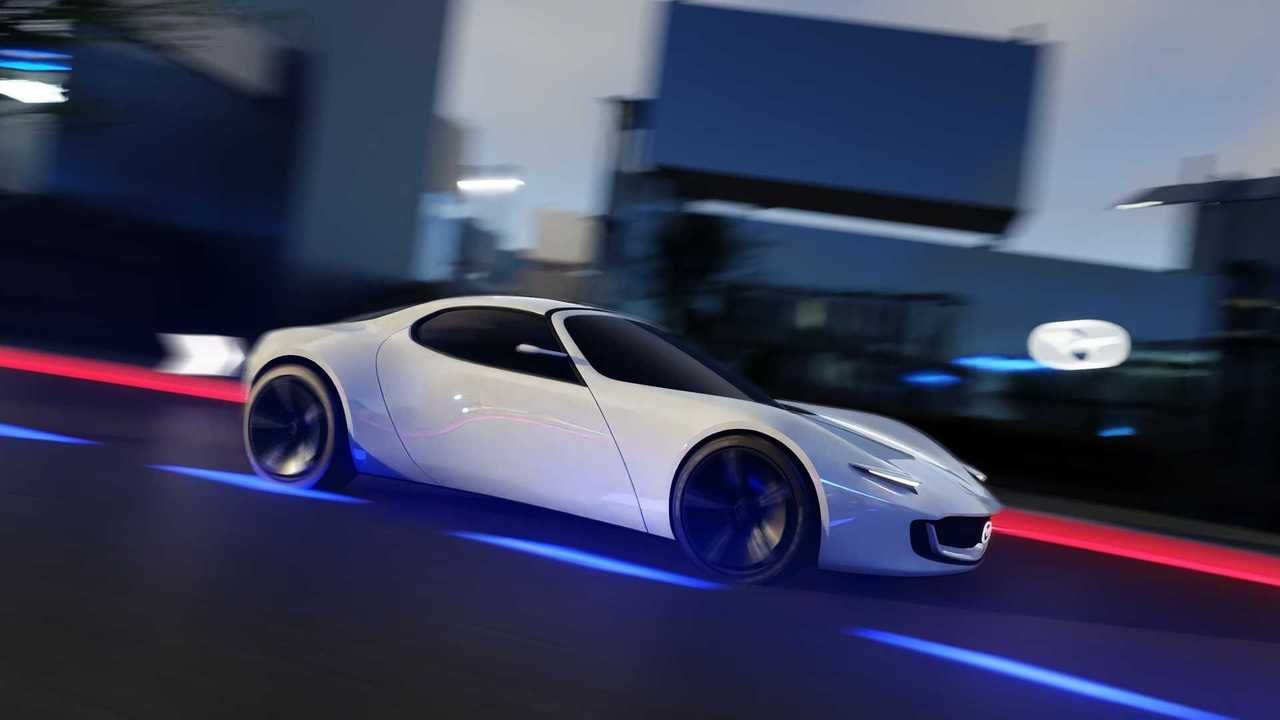Mazda’s first battery-electric production model, the MX-30 crossover, has not been as successful as fans of the brand had hoped. The vehicle only survived for two model years in the US, from 2022 to 2023, and faced challenges with its subpar range rating of 100 miles and limited availability, only being available to buyers in California. This led many people to label it as a compliance car, and the sales numbers reflected that. In the first eight months of 2023, Mazda only sold 100 MX-30s in the US, a 69 percent decrease from the previous year.
While the MX-30 continues to be sold in other markets like Japan and Europe, featuring a range-extender variant with a Wankel rotary generator, it will be discontinued in the US after the 2023 model year. However, Mazda has not given up on the idea of selling electric vehicles (EVs) in the US. According to a report from Nikkei Asia, the Japanese automaker plans to launch new EVs in the US as early as 2025 to tap into the growing EV market in the country.
Interestingly, Mazda plans to build these new EVs on platforms shared with its existing gasoline-powered vehicles. This decision is driven by cost reasons, but it remains to be seen how the market will respond, especially when other automakers like GM and Volkswagen are opting for dedicated EV architectures. The report also reveals that Mazda’s future EVs will be produced at its plant in Hofu, Japan, which has the capability to produce gasoline, hybrid, and electric cars on the same line, optimizing cost efficiency.
However, building EVs in Japan means that Mazda’s new EVs will not be eligible for the federal EV tax credit of up to $7,500. To qualify for these credits, EVs need to have their final assembly done in North America. Despite this setback, Mazda seems to have learned from the poor reception of the MX-30 in the US. The automaker acknowledges that selling small EVs is not profitable in the US market and aims to focus on launching SUVs, which are more popular.
Mazda’s CEO, Masahiro Moro, stated in an interview, ”It’s hard to make money by making small EVs given the high costs of producing automobiles. We are looking at a segment that will appeal to would-be EV buyers.” This suggests that an electric Mazda MX-5 sports car may not be a priority for the brand.
The US is Mazda’s largest single market, accounting for approximately 30 percent of its total global sales. The company aims for EVs to make up 25-40 percent of its global sales by 2030. Overall, Mazda’s decision to introduce new EVs in the US reflects its commitment to adapting to the changing automotive landscape and meeting the demands of environmentally conscious consumers.
What Type of Electric Vehicle Could Mazda Potentially Offer in the US by 2025?
As the world continues to move towards a more sustainable future, the automotive industry is undergoing a major transformation with the rise of electric vehicles (EVs). Mazda, known for its commitment to innovation and performance, has set its sights on electrification and plans to introduce a variety of electric vehicles in the United States by 2025.
Mazda has been a prominent player in the automotive industry for over a century, renowned for its stylish designs and driver-focused approach. The introduction of electric vehicles aligns perfectly with the company’s vision of sustainable mobility. By shifting towards EVs, Mazda aims to reduce carbon emissions, deliver superior performance, and provide the thrilling driving experience its customers expect.
One potential electric vehicle that Mazda could offer in the US by 2025 is a compact electric SUV. With the growing popularity of SUVs and crossovers, an electric SUV would cater to the preferences of American consumers while promoting more eco-friendly transportation. Mazda’s strong design language, characterized by sleek lines and bold aesthetics, could be seamlessly integrated into an electric SUV, capturing the attention of environmentally conscious drivers.
In terms of performance, Mazda’s electric SUV could be equipped with a powerful electric motor capable of delivering quick acceleration and a smooth driving experience. The company’s expertise in engineering lightweight vehicles could contribute to increased efficiency and range. Additionally, Mazda’s signature driving dynamics, which prioritize a human-centric approach, could be further refined in an electric SUV to ensure a responsive and enjoyable driving experience.
To address concerns regarding the limited charging infrastructure, Mazda could implement an innovative battery technology that balances both range and charging time. By collaborating with battery manufacturers, Mazda can develop a cutting-edge solution that caters to the needs of American consumers. The company’s commitment to technological advancements could potentially lead to significant strides in battery efficiency and longevity.
Furthermore, Mazda could focus on creating a seamless and comprehensive charging network in collaboration with other industry partners. This would alleviate any concerns related to extended travel and charging availability. By taking an active role in promoting the expansion of charging infrastructure, Mazda would be able to offer a more appealing electric vehicle experience to customers, ultimately contributing to the wider adoption of EVs.
It is worth noting that Mazda’s commitment to electrification extends beyond just electric SUVs. The company has expressed a desire to introduce hybrid models as well, harnessing the benefits of both electric and internal combustion engine technologies. This approach allows Mazda to cater to a wider range of customers, irrespective of their driving needs and preferences.
In conclusion, Mazda’s foray into the electric vehicle market in the United States by 2025 holds immense potential. By leveraging its rich automotive heritage and commitment to sustainable mobility, Mazda could potentially offer a compact electric SUV that combines impressive performance, innovative technology, and the captivating design language the brand is known for. Additionally, the company’s focus on developing an efficient charging infrastructure could alleviate concerns regarding range anxiety. Mazda’s vision of a future filled with electrified vehicles signifies an exciting chapter in the company’s history, as it embraces sustainable transportation while maintaining its reputation for thrilling driving experiences.

